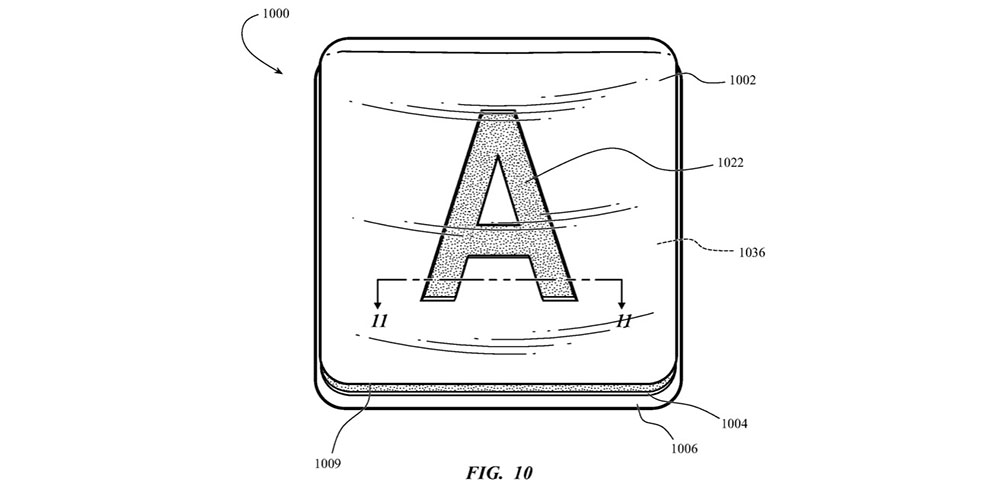
An Apple patent application has described how transparent glass keys can be used to improve the durability of the MacBook keyboard.
Quite appropriately, given the unhappy history of the butterfly keyboard on MacBooks, the patent recognizes the inherent difficulties in trying to design a keyboard that is slim and durable …
A pleasing outward appearance of an electronic device is often difficult to combine with market demand for advanced functionality, improved durability, key definition, and reduced thickness and weight. Some aesthetically pleasing materials may not be durable enough to include in a device casing or other components, and other aesthetically pleasing materials may interfere with the advanced functionality of the electronic device. Some aesthetic materials are brittle, rigid, or difficult to fabricate in caps with desired surface characteristics.
A permanent problem with keyboards is that printed keys tend to disappear over time. The patent application describes a way to avoid it entirely by inverting the keyboard glyphs below the surface, so that the light shines through the transparent surface.
One aspect of the present disclosure relates to a key for a keyboard that includes a key body that comprises an upper outer surface. The key body may comprise a transparent body having a bottom surface, a light-blocking material attached to the bottom surface of the transparent body, with the light-blocking material defining a glyph shape, and a configured carrier body to support the transparent body and light-blocking material. The upper outer surface may include at least two edges and a center, with the at least two edges raised relative to the center.
In some cases, the transparent body may comprise a glass material, the carrier body may comprise a polymeric material, and the light blocking material may comprise an opaque layer placed between the glass material and the polymeric material. The transparent body may comprise a transparent polymeric material, and the upper outer surface may also comprise a concave curvature. That concave curvature can be substantially cylindrical or spherical concave.
The result, Apple says, would be keys that are very thin but extremely durable.
These keyboards can benefit from being thin, light, and durable. Glasses, transparent ceramics (eg sapphire), transparent polymers, and the like may be desirable for use on a key surface to achieve these objectives. When used as writing surfaces or other touch interfaces, these materials can be durable and difficult to stain or scratch, even when subjected to millions of cycles of use. They can be slimmed down while still having high stiffness and rigidity, so the keys with these materials can be slimmed down while still being resistant to bending and flexing when pressed. Its transparency or translucency can also be advantageous on keyboards with backlit keys or with lateral illumination, since they can transfer, reflect or distribute light. Their surfaces can be smoothed and polished and can resist scratches or other imperfections.
Apple initially downplayed the problems with butterfly keyboards that it introduced in an effort to make MacBooks slimmer before offering a service program for them, testing revised materials that didn’t solve the problem, and eventually ditching the design in favor of A new generation scissor mechanism first installed on the 16-inch MacBook Pro. Further improving keyboard durability is certainly a worthy goal.
Via Tom’s Guide
FTC: We use automatic affiliate links that generate income. Plus.

Check out 9to5Mac on YouTube for more Apple news: